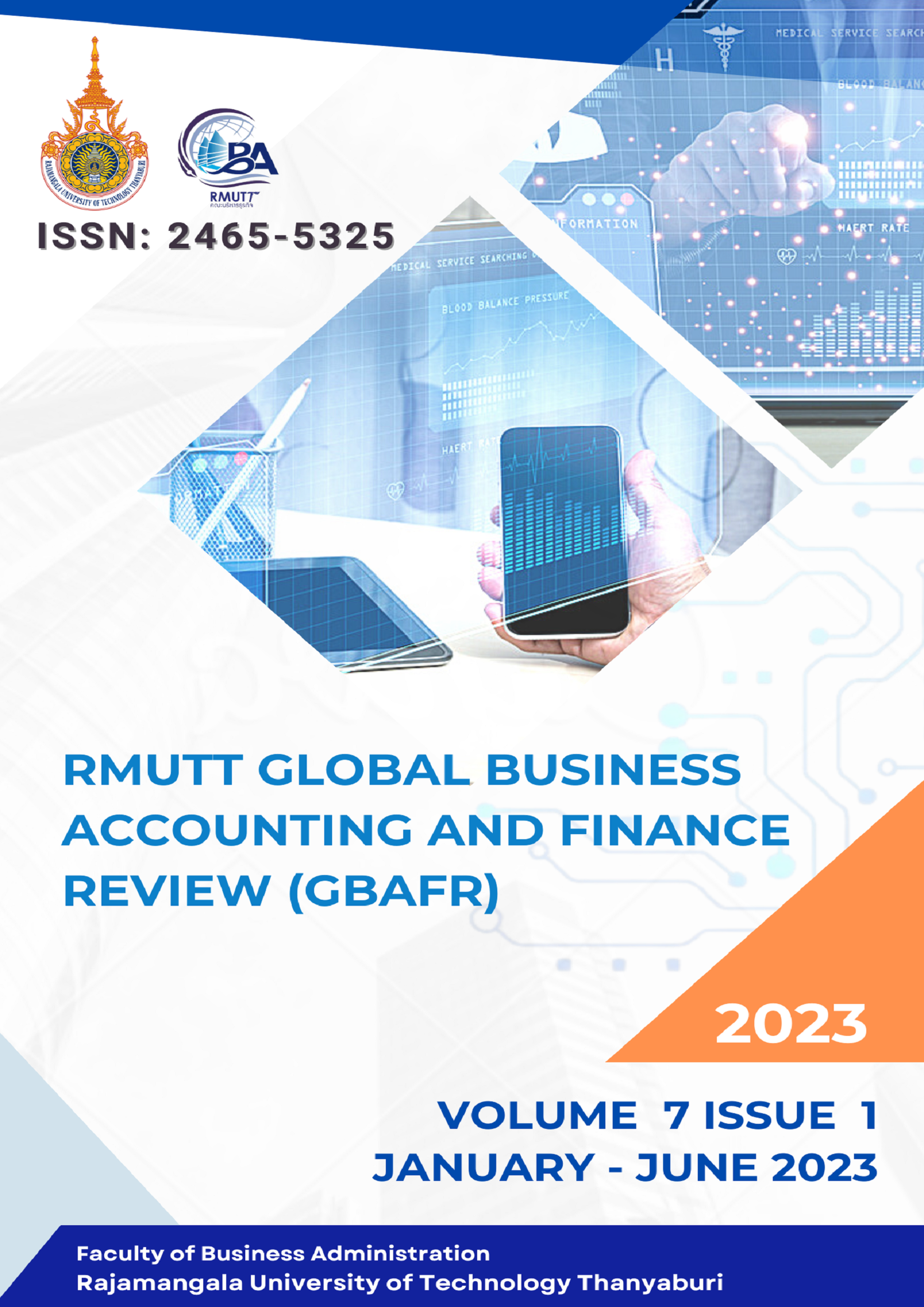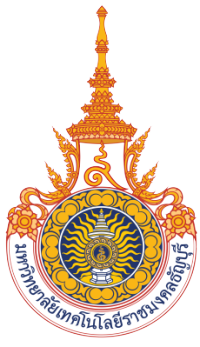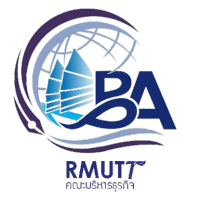ATTRACTION EFFECT AND ITS EMPIRICAL EVIDENCE IN HUMAN RESOURCE MANAGEMENT REVIEW
Keywords:
Attraction Effect, Decoy Effect, Human Resource Practices, Human Resource ManagementAbstract
The attraction effect or sometimes called decoy effect, which is one of the most mysterious context effects, has attracted significant interest from scholars in different fields. Numerous studies have tried to replicate the effect in different circumstances including the human resource management context, however, the findings are sometimes inconsistent. Considerable mechanisms and factors have been proposed to explain its occurrence and variance in the research findings. Despite such lucrative empirical evidence, its relevance and practicality to the real business world is still questioned. By systematically reviewing the current literature, this study aims to synthesize mechanisms underlying the attraction effect and factors moderating its magnitude. The review suggests a careful choice setting and comprehensive consideration of individual and organizational differences are required when replicating or explaining the attraction effect. By focusing on empirical research in human resource management context, the study reveals potential applications of the attraction effect in achieving some important goals of human resource management such as improving gender equality or accuracy of performance evaluation system as well as ethical issues associated with these applications for practitioners. The review also suggests that the attraction effect might present another form of optimal decisions under uncertainty and limited resources.
References
Abe, M., & Kaneo, M. (2022). Preference reversal: Analysis using construal level theory that incorporates discounting. Journal of Choice Modelling, 45, 100384.
Ahn, H., & Novoa, N.V. (2016). The decoy effect in relative performance evaluation and the debiasing role of DEA. European Journal of Operational Research, 249(3), 959-967.
Angner, E. (2011). A course in behavioral economics (3rd ed.). London: Red Globe Press.
Asch, S. E. (1955). Opinions and Social Pressure. Scientific American, 193(5), 31-35.
Banerjee, P., Chatterjee, P., Mishra, S., & Mishra, A. A. (2020). When should we not expect attraction effect? The moderating influence of analytic versus holistic thinking. Journal of Strategic Marketing, 28(5), 399–416.
Berg, J. E., Dickhault, J. W., & Rietz, T. A. (2010). Preference reversals: the impact of truth-revealing monetary incentives. Games and Economic Behavior, 68(2), 443–468.
Chattopadhayay, R., & Ghosh, A. K. (2012). Performance appraisal based on a forced distribution system: its drawbacks and remedies. International Journal of Productivity and Performance Management, 61(8), 881-896.
Chen, C., Huang, J., Obeid, M., & Zucker, J. (2022). Supporting employees in the work-life balancing act. McKinsey & Company. Retrieved from https://www.mckinsey.com/featured-insights/diversity-and-inclusion/supporting-employees-in-the-work-life-balancing-act
Connolly, T., Reb, J., & Kausel, E. E. (2013). Regret salience and accountability in the decoy effect. Judgement and Decision Making, 8(2), 136-149.
Corr, P. & Plagnol, A. (2019). Behavioral economics the basics. London: Routledge Taylor and Francis Group.
Dhar, R., Nowlis, S. M., & Sherman, S. J. (2000). Trying hard or hardly trying: An analysis of context effects in choice. Journal of Consumer Psychology, 9(4), 189-200.
Duffy, K. E., & Webber, R. E. (1974). On "relative" rating systems. Personnel Psychology, 7, 307-311.
Dutilh, G., & Rieskamp, J. (2015). Comparing perceptual and preferential decision making. Psychon Bull Rev, 23, 723–737.
European Institute for Gender Equality. (2022). Gender equality index 2022 the COVID-19 pandemic and care. Luxembourg: Publications Office of the European Union. Retrieved from https://eige.europa.eu/sites/default/files/documents/gender_equality_index_2022_corr.pdf
Famer, G. D., Warren, P. A., El-Deredy, W., & Howes, A. (2017). The effect of expected value on attraction effect preference reversals. Journal of Behavioral Decision Making, 30, 785–793.
Forbes survey. (2022). Work Life Balance Outranks An Easy Commute And Paths To Promotion In Employee Values, New Survey Finds. Retrieved from https://www.forbes.com/health/mind/work-life-balance-survey/
Frederick, S., Lee, L., & Baskin, E. (2014). The limits of attraction. Journal of Marketing Research, 51(4), 487–507.
Gomez, Y., Martínez-Molés, V., Urbano, A., & Vila, J. (2016). The attraction effect in mid-involvement categories: An experimental economics approach. Journal of Business Research, 69(11), 5082–5088.
Grether, D.M., & Plott, C. R. (1979). Economic theory of choice and the preference reversal phenomenon. The American Economic Review, 69(4), 623-638.
Hanneke, R., & O'Brien, K. K. (2016). Comparison of three web-scale discovery services for health sciences research. Journal of the Medical Library Association, 104(2), 109-17.
He, S., & Sternthal, B. (2023). Beyond numbers: an ambiguity– accessibility–applicability framework to explain the attraction effect. Journal of Consumer Research, 50(1), 211-232.
Highhouse, S. (1996). Context-dependent selection: the effects of decoy and phantom job candidates. Organizational Behavior and Human Decision Processes, 65(1), 68-76.
Hsee, C. K. (1998). Less is better: When low-value options are valued more highly than high-value options. Journal of Behavioral Decision Making, 11, 107-121.
Huber, J., Payne, J. W., & Puto, C. (1982). Adding asymmetrically dominated alternatives: violations of regularity and the similarity hypothesis. Journal of Consumer Research, 9(1), 90-98.
Huber, J., Payne, J. W., & Puto, C. P. (2014). Let’s be honest about the attraction effect. Journal of Marketing Research, 51(4), 520–525.
International Labour Organization. (2008). Guidelines on gender in employment policies. Switzerland: International Labour Office.
Isaacson, J. S., & Sxanziani, M. (2011). How inhibition shapes cortical activity. Neuron, 72(2), 231-243.
Izakson, L., Zeevi, Y., & Levy, D. J. (2020). Attraction to similar options: The Gestalt law of proximity is related to the attraction effect. PLoS One, 15(10), e0240937.
Jiang, Q., Fehrenbacher, D. D., & Schulz, A. (2016). Effects of irrelevant alternatives in relative performance evaluation. Twenty-Fourth European Conference on Information Systems. Retrieved from http://aisel.aisnet.org/ecis2016_rp/97
Johnson, S. K., & Chan, E. (2019). Can looks deceive you? Attractive decoys mitigate beauty is beastly bias against women. Archives of Scientific Psychology, 7, 60-70.
Kahneman, D., & Tversky, A. (1979). Prospect theory: an analysis of decisions under risk. Econometrica, 47(2), 263–291.
Keck, S., & Tang, W. (2019). When “decoy effect” meets gender bias: The role of choice set composition in hiring decisions. Journal of Behavioral Decision Making, 33(2), 240-254.
Khan, U., Zhu, M., & Kalra, A. (2011). When trade-offs matter: the effect of choice construal on context effects. Journal of Marketing Research, 48(1), 62–71.
Kim, J., Park, J., & Ryu, G. (2006). Decoy effects and brands. Advances in Consumer Research, 33, 683-687.
Kim, Y. J., & Bertalmio, M. (2016). Retinal lateral inhibition provides the biological basis of long-range spatial induction. PLoS One, 11(12), e0168963.
Kivetz, R. (2003). The effects of effort and intrinsic motivation on risky choice. Marketing Science, 22(4), 477-502.
Koscielniak, M. Rydzewska, K., & Sedek, G. (2018). Commentary: the attraction effect in decision making: superior performance by older adults. Frontiers in Psychology, 9, 2321.
Kraus, S., Breier, M., & Dasí-Rodríguez, S. (2020). The art of crafting a systematic literature review in entrepreneurship research. International Entrepreneurship and Management Journal, 16, 1–20.
Kubalová, R., & Klepek, M. (2022). Brand presence in decision-making involving decoys. Market. Tržište, 34(1), 9-24.
Kusev, P., Purse, H., Heilman, R., Cooke, A.J, Schaik, P.V., Baranova, V., Martin, R., & Ayton, P. (2017). Understanding risky behavior: the influence of cognitive, emotional and hormonal factors on decision-making under risk. Frontiers in Psychology, 8, 102.
Langlois, J. H., Kalakanis, L., Rubenstein, A. J., Larson, A., Hallam, M., & Smoot, M. (2000). Maxims or myths of beauty? A meta-analytic and theoretical review. Psychological Bulletin, 126(3), 390-423.
Lee, C.F., Chuang, S.C, Chiu, C.K., & Lan, K.H. (2016). The influence of task difficulty on context effect - compromise and attraction effects. Current Psychology: A Journal for Diverse Perspectives on Diverse Psychological Issues, 36(3), 392-409.
Lin, C.H, Sun, Y.C, Chuang, S.C, & Su, H.J. (2008). Time pressure and the compromise and attraction effects in choice. NA - Advances in Consumer Research, 35, 348-352.
Malaviya, P., & Sivakumar, K. (2002). The influence of choice justification and stimulus meaningfulness on the attraction effect. Journal of Marketing Theory and Practice, 10(4), 20-29.
Marini, M., Sapienza, A., & Paglieri, F. (2022). There is more to attraction than meets the eye: Studying decoy-induced attention allocation without eye tracking, Journal of Behavioral Decision Making, 35(4), 1-13.
Mishra, S., Umesh, U. N., & Stem, D. E. (1993). Antecedents of the attraction effect: An information-processing approach. Journal of Marketing Research, 30(3), 331–349.
Mourali, M., Bockenholt, U., & Laroche, M. (2007). Compromise and attraction Effects under prevention and promotion motivations. Journal of Consumer Research, 34(2), 234-247.
Murphy, R., Murphy, C., Kelly, M., & Roche, B. (2021). Using the implicit relational assessment procedure (IRAP) to examine implicit beauty bias in the context of employability. Psychological Record, 71(3), 423–433.
Nisbett, R.E., Peng, K., Choi, I., & Norenzayan, A. (2001). Culture and systems of thoughts: holistic versus analytic cognition. Psychological Review, 108(2), 291-310.
Padamwar, P. K., Dawra, J., & Kalakbandi, V. K. (2021). The impact of range extension on the attraction effect. Journal of Business Research, 126, 565-577.
Pettibone, J.C. (2012). Testing the effect of time pressure on asymmetric dominance and compromise decoys in choice. Judgement and Decision Making, 7(4), 513-523.
Pocheptsova, A., Amir, O., Dhar, R., & Baumeister, R. (2009). Deciding without resources: Resource depletion and choice in context. Journal of Marketing Research, 46(3), 344-355.
Rafai, I., Babutsidze, Z., Delahaye, T., Hanaki, N., & Acuna-Agost, R. (2022). No evidence of attraction effect among recommended options: A large-scale field experiment on an online flight aggregator. Decision Support System, 153, 113672.
Reb, J. (2008). Regret aversion and decision process quality: Effects of regret salience on decision process carefulness. Organizational Behavior and Human Decision Processes, 105(2), 169-182.
Reb, J., Li, A., & Bagger, J. (2018). Decoy effect, anticipated regret, and preferences for work–family benefits. Journal of Occupational and Organizational Psychology, 91(3), 441-464.
Robbins, S. P, & Coulter, M. (2018). Management (14th ed.). New York: Pearson Education, Inc.
Roch, G. R., Sternburgh, A. M., & Caputo, P.M. (2007). Absolute vs relative performance Rating Formats: Implications for fairness and organizational justice. International Journal of Selection and Assessment, 15(3), 302-316.
Siegel-Jacobs, K., & Yates, J. F. (1996). Effects of procedural and outcome accountability on judgment quality. Organizational Behavior and Human Decision Processes, 65(1), 1-17.
Simonson, I. (1989). Choice Based on Reasons: The case of attraction and compromise effects. Journal of Consumer Research, 16(2), 158-174.
Simonson, I., & Tversky, A. (1992). Choice in context: tradeoff contrast and extremeness aversion. Journal of Marketing Research, 29(3), 281-295.
Sivakumar, K. (2016). A unified conceptualization of the attraction effect. AMS Review: Official Publication of the Academy of Marketing Science, 6(1/2), 39-58.
Slaughter, J. E. (2007). Effects of two selection batteries on decoy effects in job-finalist choice. Journal of Applied Social Psychology, 37(1), 76-90.
Slaughter, J. E., Bagger, J., & Li, A. (2006). Context effects on group-based employee selection decisions. Organizational Behavior and Human Decision Processes, 100(1), 47-59.
Slaughter, J. E., Kausel, E. E., & Quinones, M. A. (2011). The decoy effect as a covert influence tactic. Journal of Behavioral Decision Making, 24(3), 249-266.
Slaughter, J. E., Sinar, E. F., & Highhouse, S. (1999). Decoy effects and attribute-level inferences. Journal of Applied Psychology, 84(5), 823-828.
Thaler, R. H. (2016). The making of behavioral economics misbehaving. London: W. W. Norton & Company.
Tranfield, D., Denyer, D., & Smart, P. (2003). Towards a methodology for developing evidence-informed management knowledge by means of systematic review. British Journal of Management, 14(3), 207–222.
Trope, Y., & Liberman, N. (2010). Construal-level theory of psychological distance. Psychological Review, 117(2), 440-463.
Trueblood, J. S., Brown, S. D., Heathcote, A., & Busemeyer, J. R. (2013). Not just for consumers: Context effects are fundamental to decision Making. Psychological Science, 24(6), 901-908.
Tsetsos, K., Usher, M., & Chater, N. (2010). Preference reversal in multiattribute choice. Psychological Review, 117(4), 1275-1293.
Wedell, D.H., & Pettibone, J.C. (1996). Using judgments to understand decoy effects in choice. Organizational Behavior and Human Decision Processes, 67(3), 326-344.
Wedell, D.H., Hayes, W.M., & Verma, M. (2022). Context effects on choice under cognitive load. Psychonomic Bulletin & Review, 29(5), 1986-1996.
Zhen, S., & Yu, R.J. (2016). The development of the asymmetrically dominated decoy effect in young children. Scientific Reports, 6, 22678.
Downloads
Published
How to Cite
Issue
Section
License
Copyright (c) 2023 Faculty of Business Administration, Rajamangala University of Technology Thanyaburi

This work is licensed under a Creative Commons Attribution-NonCommercial-NoDerivatives 4.0 International License.









